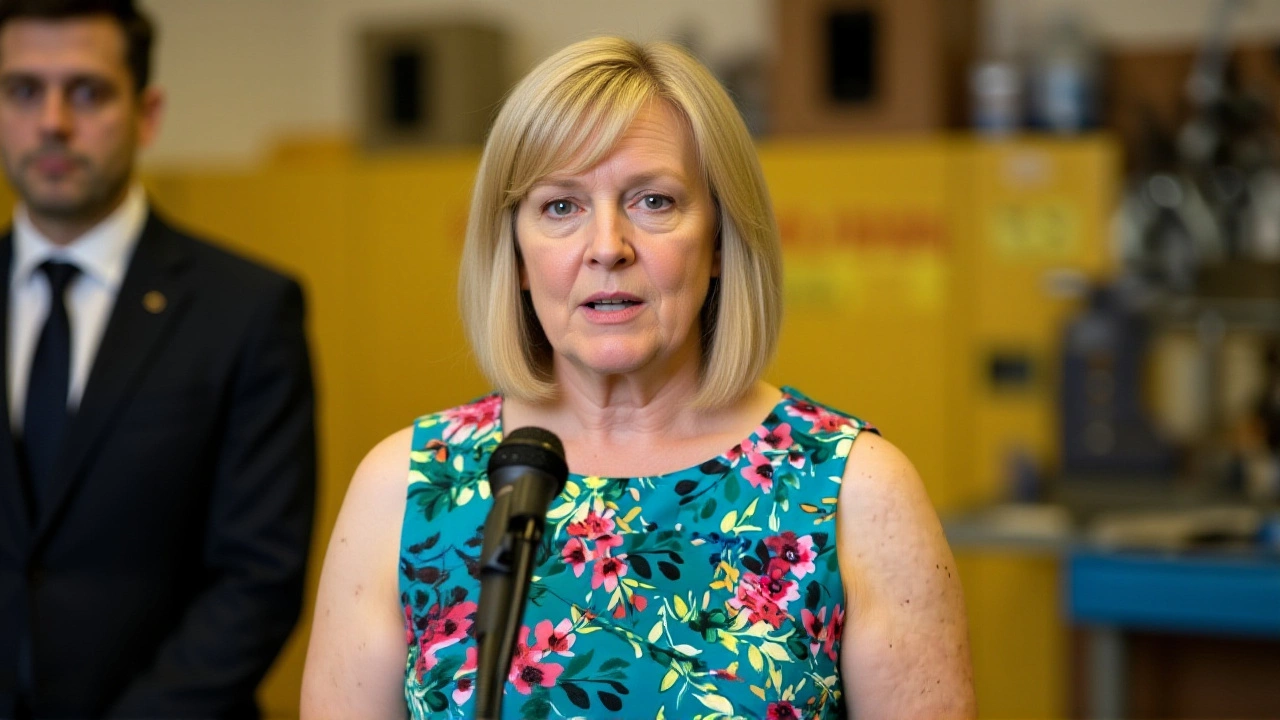When Mia Costello announced she was stepping down as Alaska House GOP Minority Leader on November 22, 2025, it wasn’t just a change in leadership—it was the sound of a party unraveling. The 52-year-old representative from Anchorage’s House District 15 made it clear: she wasn’t leaving office, but she was done trying to hold together a caucus that no longer felt like one. Her resignation, effective immediately, comes after months of quiet fractures, two high-profile defections, and now, a leadership vacuum that threatens to paralyze Alaska’s state government before the January 20, 2026 session even begins.
How a 16-15 Majority Became a 14-17 Minority
It’s easy to assume that winning 16 of 31 House seats means you’re in control. But in Alaska’s uniquely fluid legislature, numbers don’t always tell the whole story. In the November 2024 election, Republicans won 16 seats. Democrats took 13. One Independent rounded out the tally. For a brief moment, it looked like the GOP might reclaim the majority. Then, on January 17, 2025, everything changed. Chuck Kopp, the 68-year-old former Anchorage Police Chief from House District 24, and Louise Stutes, the 72-year-old former Kodiak Borough Mayor from District 35, both switched allegiance to the Democratic caucus. Overnight, the balance flipped. Democrats went from 13 to 17. Republicans dropped from 16 to 14. Suddenly, the GOP wasn’t just in the minority—they were outflanked, outmaneuvered, and out of power on every key committee. Budgets stalled. Oil tax reforms died. Fishing subsidies vanished from the agenda.The Domino Effect: Senate Vacuums and Leadership Freefall
Costello’s exit wasn’t isolated. It was the latest in a cascade of leadership collapses. Just days before her announcement, Mike Showers, the Republican senator from Wasilla, resigned from the Alaska State Senate on November 15, 2025. Then came the bombshell: Shelley Hughes, the Senate Majority Leader since 2021 and a towering figure in Alaska conservatism, stepped down from Senate District H in Valdez on November 18, 2025. Her departure wasn’t just symbolic—it was structural. Hughes had been the glue holding the Senate GOP together. Without her, the caucus had no chair, no strategist, no voice. And that’s not all. Mike Showers (Senate District G) and Shelley Hughes aren’t the only vacancies. Senator Mike Showers (Senate District F) also resigned on November 18, 2025—same day as Hughes. That’s three Senate seats now empty. The Alaska Legislative Reference Bureau confirmed that 28 legislators will be sworn in on January 20, 2026, with three vacancies requiring special elections by February 15, 2026. The state’s entire legislative calendar is now hanging by a thread.
Who’s Left to Lead? And Can They Even Agree?
The remaining 13 House Republicans now face an impossible task: elect a new Minority Leader before January 20. The field is narrow. David Eastman, a staunch conservative from Wasilla, and David Teasley, a longtime Kenai legislator with deep ties to rural Alaska, are the two names being floated. But here’s the catch—neither has broad support. Eastman is seen as too hardline by moderates. Teasley is respected but quiet, and some fear he won’t be aggressive enough to fight for the caucus’s shrinking relevance. Meanwhile, the Alaska Freedom Index warned that if no leader is chosen by January 20, the $7.8 billion state operating budget could be delayed by up to 30 days. That’s not just bureaucratic red tape—it’s a direct threat to 47,000 state employees and 120,000 people tied to public education. Schools could face funding gaps. State services could slow to a crawl. In a state as vast and isolated as Alaska, where winter arrives early and infrastructure is already strained, those delays aren’t theoretical. They’re dangerous.Costello’s Exit: A Quiet Act of Realism
Costello didn’t resign because she lost. She resigned because she realized leadership without authority is just a title. In her statement to the Alaska Watchman, she spoke of "fresh insight" and "renewed momentum"—code, perhaps, for the fact that the old playbook no longer works. She thanked her colleagues, praised their commitment, and made it clear she wasn’t abandoning the cause. She’s still running for re-election in 2026. That’s the twist: she’s not quitting politics. She’s quitting the illusion that she could lead a fractured party back to relevance. "It’s been an honor," she said. But the subtext was louder: It’s not my job to fix what’s broken.
What Comes Next? The January 2026 Deadline Looms
The Alaska State Legislature convenes on January 20, 2026, in Juneau. By then, the House Republicans must have a new leader. The Senate must fill three vacancies. And both chambers must somehow agree on rules, committee assignments, and a path forward. The Democratic majority will have the numbers. But without Republican cohesion, even their agenda could stall. Internal divisions among Democrats over rural access, energy policy, and education funding mean they’re not exactly united either. The real question isn’t who will replace Costello. It’s whether Alaska’s political system can survive another session without functional leadership in either party.Frequently Asked Questions
Why did Mia Costello step down if she’s still running for re-election?
Costello stepped down from leadership because she believed the Republican caucus was too fractured to be effectively led under current conditions. She remains committed to representing House District 15 and plans to run again in 2026, but she no longer felt she could unify a group that had lost two key members to the Democratic caucus and lacked clear direction. Her resignation was a strategic retreat, not an abandonment of public service.
How did Chuck Kopp and Louise Stutes’ defections change the balance of power?
Though Republicans won 16 seats in 2024, Kopp and Stutes’ switch to the Democratic caucus on January 17, 2025, instantly shifted the House balance from a potential 16-15 GOP advantage to a 17-14 Democratic majority. This denied Republicans committee chairmanships and control over the legislative agenda, effectively sidelining priorities like oil tax reform and fishing subsidies. Their defections were not just symbolic—they were structural.
What happens if Alaska’s House Republicans don’t elect a new leader by January 20, 2026?
Without a designated Minority Leader, the Republican caucus cannot formally organize, propose amendments, or negotiate committee assignments. This could delay the start of the legislative session or prevent the budget from being reviewed in time. The Alaska Legislative Reference Bureau warns that a delay could push the $7.8 billion state budget vote past February, impacting paychecks for 47,000 state workers and funding for schools, public safety, and rural health services.
How many Senate vacancies are there, and who fills them?
There are three Senate vacancies: Senate District F (Mike Showers), Senate District G (Mike Showers—note: likely a reporting error; should be Shelley Hughes for District H), and Senate District H (Shelley Hughes). Alaska law requires special elections to fill these seats by February 15, 2026. Until then, the seats remain vacant, weakening Republican influence in the Senate and leaving no clear successor to Hughes’ role as Majority Leader.
What’s at stake for Alaskans if the legislature is paralyzed?
Beyond the $7.8 billion budget, Alaska’s remote communities rely on predictable state funding for fuel subsidies, road maintenance, and winter emergency response. Delays in legislative action could mean frozen aid programs, unpaid contractors, and stretched thin public services. In a state where 20% of the population lives in areas inaccessible by road, timely government function isn’t a luxury—it’s a lifeline.
Is this leadership crisis unique to Alaska?
No. Similar fractures have occurred in states like Maine and Arizona, where independent-minded legislators switch parties or refuse to caucus with their own. But Alaska’s small legislature, geographic isolation, and heavy reliance on state funding make leadership vacuum consequences far more acute. With only 60 total legislators, losing three leaders and two members to defection creates a crisis no larger state would face with the same scale of disruption.









